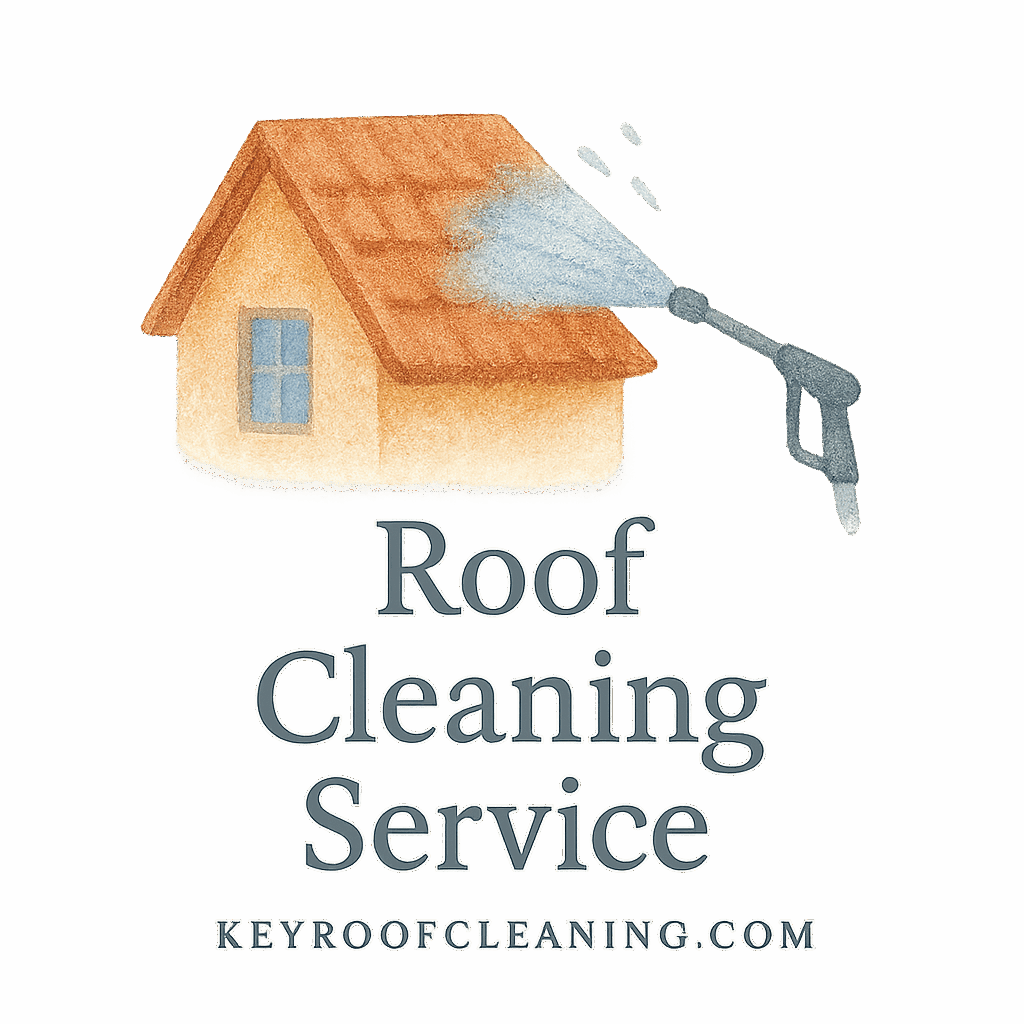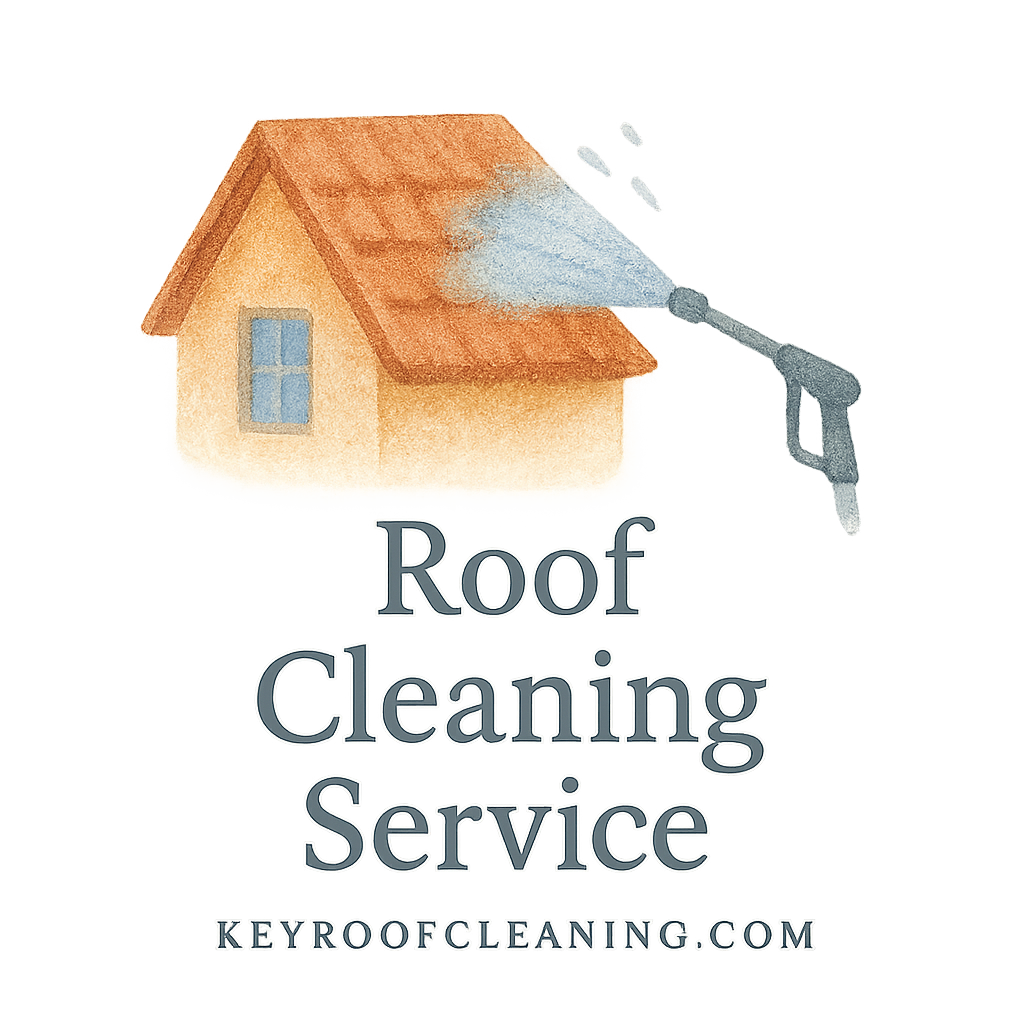Cleaning your roof might seem like a simple weekend task, but it can turn dangerous fast if you’re not prepared. A slippery surface, high elevation, and power tools? Yeah, that’s a mix that needs caution. So before you climb up there with a bucket and brush, let’s go through 9 safety tips for roof cleaning jobs to keep you secure.
If you’re looking for professional insights, make sure to check the resources at Key Roof Cleaning, especially their sections on roof cleaning techniques and maintenance safety.
Why Roof Cleaning Safety Matters
Falling from a roof is no joke. Whether you’re clearing moss or blasting away grime, the risks are real. OSHA reports hundreds of falls from ladders and rooftops every year. But with the right approach, you can protect yourself while still getting the job done efficiently. Want to keep your roofing materials in top shape too? Head over to roof types and materials for durability tips.
Tip 1: Inspect the Roof Before You Start
Look for Weak Spots and Damage
Before stepping on your roof, give it a good inspection. Look for signs of rot, soft spots, loose shingles, or cracks. If the roof is already compromised, your weight could make things worse.
Clear the Area of Debris
Branches, leaves, and random clutter can become slip hazards. Grab a blower or broom and clear your path before you take that first step. This also aligns with the checklist from our friends at Key Roof Cleaning’s checklist tag.
Tip 2: Use Proper Ladder Safety Techniques
Choose the Right Ladder
A wobbly ladder is a recipe for disaster. Use one that’s rated for your weight and tall enough so you don’t need to overreach.
Ladder Setup and Angle
Set your ladder at a 75-degree angle for maximum stability. You can use the “1 in 4” rule — for every 4 feet up, place the base 1 foot out.
Secure the Ladder Base
Tie the base or use ladder stabilizers. And always place it on solid, even ground. For more on safe access, explore the ladder safety tag.
Tip 3: Wear the Right Safety Gear
Footwear with Grip
Non-slip shoes are your best friend on a sloped, wet roof. Avoid smooth-soled sneakers or worn-out boots.
Helmets and Harnesses
For added safety, use a roof harness and wear a hard hat — especially if someone else is working below you. Gear is one of the easiest ways to prevent injury. Refer to OSHA standards covered in the OSHA tag.

Tip 4: Never Work Alone
Have a Spotter on the Ground
Someone on the ground can keep an eye out, hold the ladder, or call for help if anything goes wrong.
Communication is Key
Use walkie-talkies or phones to stay in touch. If things go south, every second matters.
Tip 5: Choose the Right Weather Conditions
Avoid Wind, Rain, and Extreme Heat
Roof cleaning in poor weather is like walking a tightrope in a storm. Wet surfaces are slippery, wind can throw you off balance, and direct sun can cause heat exhaustion. Choose calm, overcast days for your project.
Tip 6: Use Eco-Friendly and Safe Cleaning Products
Protect Yourself and the Environment
Harsh chemicals can damage both your roof and your health. Biodegradable solutions are better for the planet — and safer for you. For more on sustainable options, check out eco-friendly, green methods, and biodegradable tags.
Avoid Slippery Chemicals
Some cleaners can leave behind a slick residue. Choose products that clean effectively without turning your roof into a skating rink. Visit tools and products to see what’s recommended.
Tip 7: Be Aware of Electrical Hazards
Watch Out for Overhead Wires
Overhead power lines and nearby transformers can be deadly if touched. Stay clear and always be aware of your surroundings.
Use Ground Fault Circuit Interrupters
Using powered equipment? Plug into outlets with GFCI protection to avoid electrical shocks. Safety with electronics is non-negotiable.
Tip 8: Learn the Correct Roof Cleaning Techniques
Soft Washing vs. Pressure Washing
Pressure washing might look effective, but it can damage shingles, especially on delicate surfaces. Soft washing uses gentle streams and is much safer. Curious about the techniques? Dive deeper into roof cleaning methods and delicate roof for more insights.
Follow a Roof Cleaning Checklist
Structure your process — from setup to cleanup — with a reliable checklist. It keeps things systematic and reduces the risk of forgetting crucial steps. This method supports long-term sustainability and performance.
Tip 9: Hire a Professional if in Doubt
When to Call the Pros
If your roof is steep, fragile, or covered in grime, sometimes it’s best to leave it to experts. They come with the right tools, training, and insurance. Explore professional service for more guidance.
Choosing the Right Roof Cleaning Service
Not all pros are equal. Look for companies with solid reviews, safety protocols, and environmentally-conscious practices. Here’s a smart place to start: Key Roof Cleaning.
Final Thoughts on Roof Cleaning Safety
Roof cleaning isn’t just about scrubbing away moss — it’s a task that demands respect, preparation, and a good dose of common sense. By following these 9 safety tips for roof cleaning jobs, you protect not only yourself but also your home. Stay smart, gear up, and when in doubt — call in the pros.
Be sure to explore topics on green living, accident prevention, and roof cleaning benefits to stay ahead of the game.
FAQs
1. Is it okay to walk on all types of roofs when cleaning?
No. Some roofing materials like clay tiles are fragile and can break easily. Learn more at roof types and materials.
2. Can I clean my roof using bleach?
Bleach can damage your roof and harm your plants. Stick to biodegradable solutions for a safer clean.
3. What’s the safest time of day to clean a roof?
Morning or late afternoon when it’s cool and dry — avoid peak sun hours to prevent overheating.
4. How often should I clean my roof?
At least once a year, or more frequently if you live in a humid or tree-heavy area.
5. Are eco-friendly cleaning products effective?
Absolutely! Many eco-friendly products clean just as well as harsh chemicals, minus the environmental damage.
6. What are the signs I need professional help?
If your roof is heavily stained, structurally damaged, or unsafe to walk on, it’s time to check hiring tips.
7. Do safety tips apply differently for tile roofs?
Yes, tile roofs are delicate and require special handling. See tile roof for specifics.


